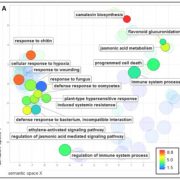
NO2 Enhances Pathogen Resistance
Blog, Plant Physiology, Plant Physiology: On The InsideNitrogen dioxide (NO2) forms in plants under stress conditions, but little is known about its
physiological functions. Using a variety of techniques, Mayer et al. (10.1104/pp.18.00704) have examined the effects of fumigating Arabidopsis with 10 ppm NO2 for 1 h, a treatment that does not cause
visible…
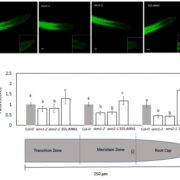
Annexins Facilitate Post-Phloem Sugar Transport
Blog, Plant Physiology, Plant Physiology: On The InsideBecause local sugar concentrations play a critical role in regulating root growth, it is important to learn more about the mechanisms that control sugar transport into the growing zones of the
root. It has previously been proposed that once translocated sugar reaches the interface between conducting…
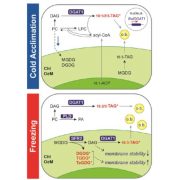
A Lipid Synthesis Enzyme Confers Freezing Tolerance
Blog, Plant Physiology, Plant Physiology: On The InsideDespite major advances in understanding cold signaling, cold acclimation, and freezing protection in model and crop species, and extensive studies of natural variation in freezing tolerance in Arabidopsis accessions, the question of which genes and mechanisms underlie freezing tolerance of wild species…
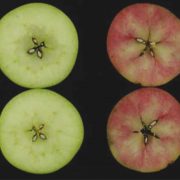
How Ethylene Reddens Apples
Blog, Plant Physiology, Plant Physiology: On The InsideEthylene is essential for the ripening of climacteric fruits, and a rapid burst of ethylene production and a rise in respiration occur at the transition to ripening. In ripening apple (Malus domestica) fruits, the accumulation of anthocyanins that is responsible for reddening is correlated with ethylene…
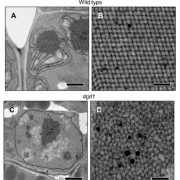
Etioplasts: The Role of Digalactosyldiacylglycerol
Blog, Plant Physiology, Plant Physiology: On The InsideIn dark-grown plants, the plastids of cotyledon cells develop as etioplasts. Etioplasts contain unique internal lattice membrane structures called prolamellar bodies (PLBs) and lamellar prothylakoids (PTs). PLBs accumulate protochlorophyllide (Pchlide), a chlorophyll intermediate, in a complex with NADPH…

Singlet Oxygen and Osmotic Stress
Blog, Plant Physiology, Plant Physiology: On The InsideSome experimental systems aimed at understanding the effects of drought on plants have incorporated cell-impermeable high molecular weight polyethylene glycol (PEG) to mimic the osmotic component of drought stress. The use of PEG showed that drought stress response could be separated into components…

A Tonoplast Calcineurin B-Like Protein and Stomatal Movement
Blog, Plant Physiology, Plant Physiology: On The InsideAbscisic acid (ABA) promotes stomatal closure and inhibits light-induced stomatal opening. An early event in ABA signaling is an influx Ca2+ ions across the plasma membrane and an increase of cytoplasmic calcium ([Ca2+]cyt). ABA-induced stomatal closure involves an outward K+ flux and dynamic vacuolar…

Jasmonic Acid Inhibits Lateral Root Formation
Blog, Plant Physiology, Plant Physiology: On The InsideArchitectural modifications of plant root systems enable plants to survive adverse conditions. Lateral roots, for example, help anchor the plant in the soil, and facilitate the uptake of water and nutrients from the soil. Auxin is a plant hormone essential to root development including the elongation…
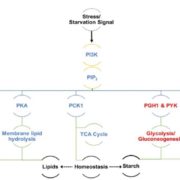
A Molecular Gatekeeper of Algal Biofuel Synthesis
Plant Physiology, Plant Physiology: On The InsideAlgae undergo a complete metabolic transformation under stress by arresting cell growth, inducing autophagy, and hyper-accumulating biofuel precursors such as triacylglycerols and starch. However, the regulatory mechanisms behind this stress-induced transformation are still unclear. Understanding the signaling…

